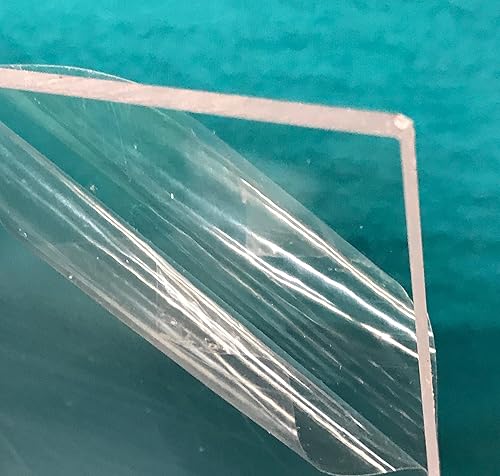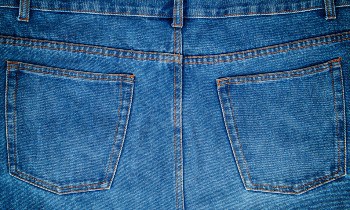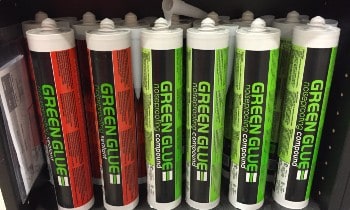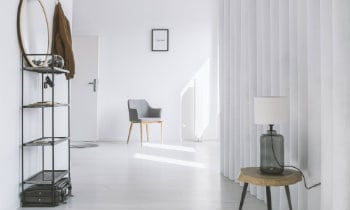While planning out a voiceover booth in my side office I started thinking about windows and how to make them soundproof. Since I was still in the planning stages, I had the freedom of choosing what I wanted my windows to be made from, which had me had wondering, plexiglass vs glass: which is better for soundproofing?
Plexiglass and glass both offer similar soundproofing characteristics. Plexiglass provides better dampening and absorption while glass has more density and mass which is better for blocking sound. Plexiglass is more cost-effective though, which means you can potentially double it up for increased effect.
So why would you choose one over the other? With differences in price, durability, and more, there’s a lot to explore here. Special acoustic glass is even made just to solve this type of problem. Let’s dive a bit deeper into the comparison and see how glass and plexiglass stack up against each other.

Soundproofing Principles Applied to Glass and Plexiglass
Mass
Sound waves transfer through solid mediums by causing vibration. The more mass the solid medium has, the harder it is to move, thus reducing the amount of vibration and sound that is transferred. Glass and plexiglass are both available in many thicknesses, and thicker panes will be better at blocking sound.
Between a piece of plexiglass and a piece of glass that are both the same thickness, the glass will be denser and weigh more. This will result in better soundproofing since it’s harder to vibrate and so its harder to cause the sound transfer.
Absorption
Absorption is when a soft medium can effectively negate the energy of a sound wave by absorbing it. Since neither glass or plexiglass is soft, neither provides much of an absorption effect. Plexiglass is much softer and more flexible than glass though, so it has a slight edge in this department.
Damping
Damping is about curbing resonance. Resonance is the ringing sound you hear when you tap on a glass with a metal spoon. Glass is naturally very resonant, so a glass window will also be resonant. This will be more pronounced at certain frequencies. Plexiglass, on the other hand, is not very resonant since it is soft. It will not ring the way glass will, so it’s the better choice when it comes to damping.
STC rating
What is an STC rating?
STC stands for sound transmission class. It’s a measurement of how well different materials block sound from transferring. The higher a product’s STC rating, the more effective it is at soundproofing.
With a low STC rating of 25, you would be able to easily hear and understand normal volume speech through your material. With a higher STC rating of 40, loud speech would be heard as little more than a murmur. STC ratings of 50 and higher are used in professional studios and other applications where a quiet environment is a must.
STC Ratings: Plexiglass vs Glass Soundproofing
Now that we’ve discussed what STC ratings mean let’s see how glass and plexiglass compare. A single pane sheet of ¼” glass has an STC rating of 31. Plexiglass of the same ¼” thickness has an STC rating of just 29.
A small difference in the STC rating of just two points isn’t going to make much audible difference. But is the difference more pronounced with thicker pieces?
A ½” sheet of regular glass will have an STC rating closer to 36. The same thickness plexiglass will only provide an STC rating of 33. As the STC ratings make clear, between regular glass and plexiglass at any given thickness, glass is better at blocking sound transmission.
For improved soundproofing, you can use two pieces with a dead air space between them that will help nullify the sound even further. Using this method with two pieces of ¼” glass will yield an STC rating of 39. With plexiglass, instead, the resulting STC would be 38. A large improvement over a single sheet.
Price
We’ve already seen how thicker pieces of glass or plexiglass are more adept at soundproofing than thinner ones. Moreover, we’ve seen how some dead air space and a second pane can drastically increase our STC ratings. One thing to consider though, is how much is this going to cost?
Acrylic plexiglass is much cheaper than regular glass, meaning you can get thicker sheets for the same price, improving your soundproofing overall. You can even purchase multiple sheets of thicker plexiglass and still be saving money over purchasing glass.
Even though glass is slightly more effective at reducing sound on its own, the price difference means you can theoretically get better soundproofing for less money by doubling up on thicker plexiglass panes and leaving a dead air space between them.
Durability
Depending on what you’re planning to soundproof, durability may be an important factor. Even when it comes to installation, a more resilient material will leave you less prone to accidents.
Everyone knows that glass is not very difficult to shatter. However, it is very hard, and it’s difficult to scratch. On the other hand, plexiglass is made of acrylic plastic, so it’s not easily shattered or broken.
That said, it does tend to scratch easily. To remedy this, window-grade plexiglass is available that is much harder and less likely to scratch. I would suggest using window-grade plexiglass for any soundproofing application.
Of course, thicker materials are also stronger and less likely to get damaged. While you can get both glass and plexiglass in thick sheets of 1” and possibly even thicker, price begins to become a factor.
Since plexiglass is much more affordable, you can feasibly get much thicker plexiglass for the same price, which results in a much stronger material overall.
Acoustic Glass and Plexiglass
All of the numbers we’ve discussed so far pertained to regular sheets of glass and plexiglass. However, manufacturers have stepped up their game in terms of soundproofing by offering acoustic alternatives with superior STC ratings. Laminated glass and glazed plexiglass have vastly improved soundproofing characteristics.
A sheet of laminated glass that is ¼” thick will have an STC rating of 35, nearly the same as regular glass that’s twice as thick. Similarly, a ½” sheet of laminated glass has an STC rating of 38.
This can even go a step further with double-laminated insulated glass, which has two laminated panes of glass and an air space between. Using ¼” thick sheets, this will effectively result in an STC rating of 49, approaching recording studio soundproofing levels.
Similarly, a double glazed sheet of ½” plexiglass has an STC rating of 38. Once you factor in price, the much more affordable plexiglass may seem more appealing since laminated glass can get very expensive, but laminated glass is a superior soundproofing material. If you’d like to learn more about it, read my article about laminated glass noise reduction.
Is Plexiglass A Good Sound Barrier?
Overall, plexiglass sound barriers work, even if it’s not the single most effective material that there is. Compared to a glass of a similar thickness, plexiglass is nearly as good at a sound reduction, but glass does have the edge.
That said, plexiglass is so much more affordable that you could get either thicker plexiglass or more sheets of it for the same price as glass. This would result in better soundproofing for the price. For those on a budget, a plexiglass sound barrier is the best choice for soundproofing since you can get better performance for the price.
If you need the best soundproofing performance and the price isn’t as important, then the laminated glass is your best option. It’s more effective at soundproofing overall, but you’re going to pay a premium for the performance.
How to Use Plexiglass for Soundproofing
There are many ways to use plexiglass for soundproofing your windows that don’t require removing any of your existing glass. These are relatively cheap methods of making your space much quieter and blocking out unwanted noise.
You can simply add these onto your existing windows to stop the transmission of sound. Thanks to the affordability of window-grade plexiglass, you can now have durable soundproof windows without a major investment.
Soundproof Window Inserts
Soundproof window inserts are made from acrylic plexiglass and cut to a specific size for a perfect fit. They will go on the inside of your existing window and fill the entire space from frame to frame. This is a great way to turn old, leaky windows into effective sound blockers that help you achieve a quiet and peaceful living space.
Once in place, you can seal around the edges for improved soundproofing. These inserts will work on almost any window and effectively block 50-70% of unwanted noise.
Magnetic Acrylic Soundproof Windows
 Magnetic acrylic soundproof windows are an easy and non-destructive way to improve the sound blocking characteristics of your existing windows. It’s an insert made of an acrylic sheet for soundproofing. What’s unique is the way that it attaches to your window.
Magnetic acrylic soundproof windows are an easy and non-destructive way to improve the sound blocking characteristics of your existing windows. It’s an insert made of an acrylic sheet for soundproofing. What’s unique is the way that it attaches to your window.
Instead of being screwed in place, these inserts attach magnetically to your window frame. This means they won’t damage anything during installation, and they can be easily removed later if need be. They’re quite effective at soundproofing, reducing up to 70% of unwanted noise. Even better, they’re 40-60% less expensive than replacing your existing window.
Soundproof Storm Windows
Unlike inserts that are designed to attach inside of your current windows, soundproof storm windows will attach to the outside instead. This means you can get many of the benefits of traditional storm windows, while also reducing the amount of outside noise that bleeds into your home.
Traditional storm windows can already reduce sound by as much as 50%. By getting storm windows that utilize soundproofing technology such as laminated and insulated glass, you’ll get even more effective sound reduction.
Plexiglass Alternatives
While plexiglass and glass can be added to your windows for improved soundproofing, they’re not the only materials that can be used to achieve this. Many alternatives exist that will also reduce sound transmission and can be even more cost-effective than plexiglass.
Soundproof Curtains
 Soundproof curtains are easy to install, they’re non-permanent, and they are very effective at blocking sound. They can be installed over your windows just like any other curtains, only these will make your home quieter, and they’ll even block out unwanted light and heat, reducing your energy expenditures.
Soundproof curtains are easy to install, they’re non-permanent, and they are very effective at blocking sound. They can be installed over your windows just like any other curtains, only these will make your home quieter, and they’ll even block out unwanted light and heat, reducing your energy expenditures.
More importantly, they’re an inexpensive solution to noisy streets and traffic that are currently breaching the peace of your estate. You can also find them in many colors and designs that will add a unique touch to your home’s decor.
Window Blinds
 Similar to soundproof curtains, soundproofing window blinds are a non-destructive way to make your home quieter without breaking the bank or causing permanent changes. Many brands make them so you’ll have plenty of colors and designs to choose from.
Similar to soundproof curtains, soundproofing window blinds are a non-destructive way to make your home quieter without breaking the bank or causing permanent changes. Many brands make them so you’ll have plenty of colors and designs to choose from.
Luckily, these tend to be pretty affordable, so it won’t break the bank to bring some silence to your living space. Soundproof window blinds will also block out unwanted light and heat, similar to soundproofing curtains.
For more information on soundproof blinds please see our article Best Soundproof Blinds of 2023.
DIY Window Plug
If blinds and curtains don’t sound like a serious enough solution to curb the cacophony of noises outside your window, then a DIY window plug may be the answer to your noise pollution problems. A window plug is essentially a cover that you build to fit over your window on the inside. It will effectively block out sound, light, heat, and anything else you don’t want creeping in through your windows.
Since you’ll build it yourself, a window plug is one of the cheapest solutions for reducing unwanted noise in your home, but that doesn’t mean it isn’t effective. All you’ll need are a few tools, a couple of materials, and the step by step instructions in my article on how to build soundproof window plug.
Conclusion
When comparing plexiglass vs glass for windows, it’s clear that they each have their advantages. Between glass and plexiglass of the same thickness, glass is the more effective soundproofing material.
However, plexiglass is so much cheaper that you can afford to get either thicker sheets or more pieces for the same price as glass. This means you can get a better sound reduction for a lower cost by using plexiglass.
Glass is the best choice for maximum soundproofing, but you’ll need to spend more and get a laminated glass for its acoustic properties.
If you found this article helpful, please feel free to share it with others who may also find this information useful. For comments and questions left in the comments box below, I will try to answer them as quickly as possible, so be sure to ask about anything you’d like clarified.
You May Also Like:





Hi Eugene- Thanks for this info. I have an almost insurmountable problem. I live Very close to a freeway on the 3rd floor. I’m trying to soundproof my balcony, but live in a condo so am restricted by HOA who may not allow me to install a plexiglass sound barrier as we aren’t permitted to attach anything to the outside rail. My Plan B was soundproof drapes, as I can use a tension rod to hang them. The open space where I have a seating area is 6X12. (Were I to put Plexiglass, I would do the full length of the balcony, so about 26F long.) So, if I hang the drapes, and then put an acoustic panel hanging on the balcony wall, along with floor covering, would I accomplish enough reduction in sound to enjoy the space? Thanks for your input.
Thank you for the infos , very appreciate in this time were there is so many noisy thermopump……..
Thank you for very useful information,it really helped me on my project.
thank you for the article, very informative. I’m window installer and have questions about noice reduction windows from time to time. One that I definitely am not sure is if there would be big visible difference between New Construction window with its STC 31 vs retrofit window with its same STC but still, we have to leave old aluminum or steel frame behind the retro vinyl frame. We shoot foam and cover inside with vinyl strips and caulking so I would say sound should not get through the sides but would like to hear from you what is your thought about it?
Hi Marek,
I have installed windows for years and try my best not to install retrofit windows. Unless you remove interior casing to see what type of insulation is between the old window frame and the wall framing, you cannot guarantee either the R-value, or the soundproofing quality of your new insert window. I know that retrofits are quicker, easier, and cheaper but the customer usually loses glass area, and you, the installer cannot have confidence in the quality of the installation.
Terry